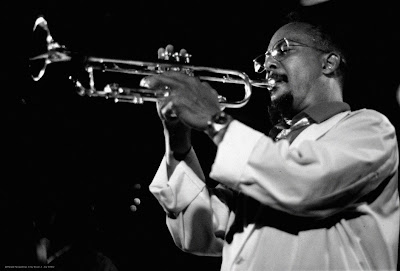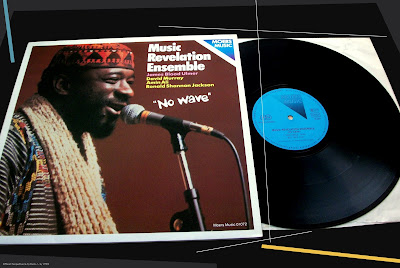Label: Get Back – GET 2017
Format: 2 × Vinyl, LP,
Reissue, Gatefold Sleeve / Country: Italy / Released: 2002
Style: Free Jazz, Free
Improvisation
Recorded On October 5th, 1969 in Paris, France.
Liner Notes – Brian Case
Photography By – David
Redfern
Producer – Jean-Luc Young
Original BYG recordings (Japan)
– Live Part 1/BYG Records – YX-2040
Live Part 2/BYG Records – YX-2041
The LP was issued on the
Arista Freedom label in the United States in 1974.
© 2002 Get Back -
Manufactured and marked by Abraxas srl - via Aretina, 25 - 50069 Sieci
(Firenze) Italy. Issued under license from
Charly Licensing Aps
Matrix / Runout: GET 2017
DLP 1 A 33RPM
Matrix / Runout: GET 2017
DLP 1 B 33RPM
Matrix / Runout: GET 2017
DLP 2 A 33RPM
Matrix / Runout: GET 2017
DLP 2 B 33RPM
A - Oh Strange (Part 1) ………………………………………………….....….
23:37
B - Oh Strange (Part 2) ………………………………………………….....….
25:38
Written-By – Joseph Jarman, Lester Bowie
C - Bon Voyage (Part 1) …………………………………………….…….......
21:50
D - Bon Voyage (Part 2) …………………………………………….…….......
24:08
Written-By – Lester Bowie
Personnel:
Lester Bowie – trumpet,
fluegelhorn, bass drum
Roscoe Mitchell – soprano
sax, alto sax, bass sax, logs, bells, siren, whistles
Joseph Jarman – soprano sax,
alto sax, clarinet, oboe, flutes, marimba, vibes
Malachi Favors – bass,
fender bass, banjo, logs, drums, percussion
Fontella Bass –
vocalsRecorded in 1969, Live in Paris follows two studio albums that the Art Ensemble cut for BYG/Actuel during the same year -- A Jackson in Your House and Message to Our Folks. What Parisian audiences must have made of the band with its wild makeup and costumes can only be debated, but the music contained on this double-LP, original double album is stellar (the LP was issued on the Arista Freedom label in the United States in 1974). Each LP features one composition, divided into two parts. "Oh, Strange," by Joseph Jarman and Lester Bowie, begins with a very short, bluesy jazz theme that is augmented almost immediately with all manner of percussion instruments, which multiply until they literally take over, leaving Jarman and Mitchell, who knottily play a folk song variation on the opening theme that is articulated over moans, groans, and droning baritone and tenor saxophones. Dynamics and tension begin to gradually shift as notions of tempo, and even striated harmonics, are laid waste in the din. But this far from unlistenable noise; in fact, perhaps now in the 21st century more than ever before, the freewheeling improvisations of the Art Ensemble make a kind of syntagmatic sense. On the other monolithic piece here, "Bon Voyage," written by Bowie, the Art Ensemble is accompanied by the composer's then-wife, singer Fontella Bass, who recorded "Les Stances à Sophie" with them later (Famoudou Don Moye was not yet a member of the ensemble). Bass uses her rhythm and blues grit and gospel dynamics and control to improvise alongside the bandmembers, who have to make plenty of room for her contribution. There is a wondrous tension at play in the oppositional fields of male and female energies here. Bass swoops, glides, hollers, moans, and sings her way into the maelstrom of space. This is the finest live recording by the Art Ensemble, and documents the first tour of a legendary band that created new standards not only for improvisation but for performance as well. Now that Lester Bowie and Malachi Favors Maghostus have left this world, with this double LP, I want to remind listeners how enormous their accomplishments were.
Overall, this is an
extremely interesting album for fans, but neophytes should check out a few
other entries before coming here. If you do run into this first, moved toward
it by some of its following, just remember that this is only one facet of a
very talented band.
Enjoy!
Enjoy!
If
you find it, buy this album!















































